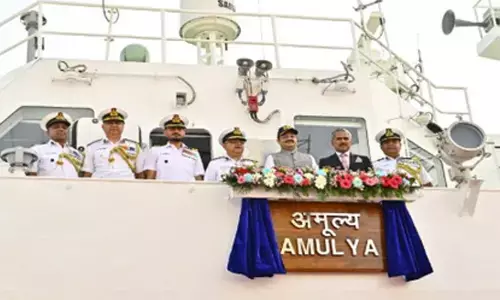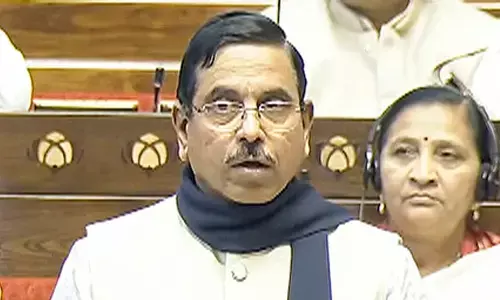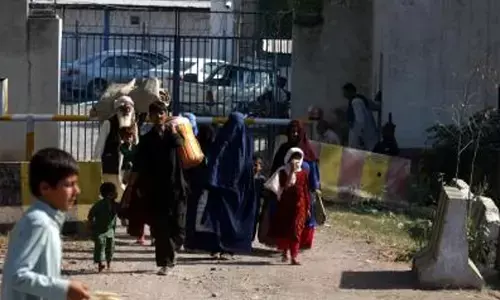Primed for change, but only 3.2 percent Assamese have Aadhaar card

A 65-year-old citizenship issue, reflecting the strains of migration, has resulted in no more than 3.2 percent of Assam\'s population being enrolled in Aadhaar, India’s biometrics-based unique identity system, the world’s largest.
A 65-year-old citizenship issue, reflecting the strains of migration, has resulted in no more than 3.2 percent of Assam's population being enrolled in Aadhaar, India’s biometrics-based unique identity system, the world’s largest.
Voting in Assam has concluded (results are scheduled for May 19th) and the new government will inherit a state with some of India’s lowest development indicators – the country’s highest maternal mortality, the worst infant mortality; low literacy ranking (26th of 35 states/union territories) – and growing aspirations.
With no more than 0.3 percent (8,994) of 2.9 million LPG consumers in Assam linked to Aadhaar as on December 7, 2015 (the national average is 61 percent), the lack of unique identities will preclude the spread of related social-security benefits and programmes.
Five-and-a-half years after the programme started, a billion Indians (93 percent) are now issued with a 12-digit identification number called Aadhaar (Hindi for foundation), and more than 500,000 are enrolled every day. As of April 4, 2016, 1,000,856,739 Indians (not necessarily citizens) received Aadhaar identities, according to the Unique Identification Authority of India (UIDAI).
With the Aadhaar identity increasingly linked to variety a government payments, Assam will find it hard to implement many of Prime Minister Narendra Modi’s technology-driven social-security programmes.
Held back by disputes over citizenship and unease over migration from Bangladesh, the states of Assam, Meghalaya, Mizoram, Nagaland, Arunachal Pradesh and Manipur do not mirror the speed of Aadhaar’s nationwide spread. In Assam, no more than 1.04 million of 32 million people (3.2 percent) had Aadhaar numbers on March 31 2016, followed by Meghalaya (3.5 percent).
“Enrolment in Assam has started in only three districts — Golaghat, Nagaon and Sonitpur — probably because of National Register of Citizens (NRC) issue in the state because of which operations are yet to be started in full-swing,” L.K. Pegu, UIDAI Deputy Director General, Guwahati Regional Office, told IndiaSpend. “So, penetration is low.”
The NRC is a register with information of all Indian citizens, first prepared after the 1951 Census. It contains the names of citizens, based on electoral rolls up to 1971 and the 1951 NRC.
Following the creation of Bangladesh (formerly East Pakistan) in 1971, illegal migration into Assam has risen, with violent agitations since the 1970s over the issue. So, unless the names of citizens are recorded in the updated NRC, Aadhaar enrolment has been quietly slowed – even though Aadhaar is not meant for confirmation of citizenship.
Migration and citizenship – stumbling blocks for Assam and other northeastern states
The NRC is being updated in Assam and only those whose names appear in the NRC (1951) and electoral rolls up to March 24 (midnight) 1971 – and those who came to Assam on or after January 1, 1966, but before March 25, 1971 and registered themselves with the government and have not been declared as illegal migrants or foreigners – are being included.
“Aadhaar operations in six northeastern states – Assam, Meghalaya, Mizoram, Nagaland, Arunachal Pradesh and Mizoram – are done by the Registrar General of India under the Directorate of Census. Tripura and Sikkim are operated by UIDAI,” said Pegu.
In Tripura, 91.5 percent of the population now has Aadhaar numbers; in Sikkim, 90 percent, as on March 31, 2016.
Prime Minister Narendra Modi and Bharatiya Janata Party (BJP) president Amit Shah have promised to stop migration if the BJP comes to power in Assam.
As many as 141,733 doubtful/disputed voters were reported in Assam by the Election Commission in April last year, according to an April 23, 2015 Lok Sabha reply. People who cannot produce proof of nationality are marked "disputed" or "D" voter by the Election Commission.
Poor Aadhaar enrolment in Assam might deprive its population of economic benefits
Poor Aadhaar enrolment indicates that more than 31 million people in Assam cannot avail the benefits of JAM (Jan Dhan-Aadhaar-Mobile) – a direct transfer of social-security benefits into bank accounts – introduced in February 2015 by the BJP-led National Democratic Alliance government.
The government aims to implement direct benefit transfers (DBT) through JAM, which will improve the economic condition of India’s poor by reducing leakages and market distortions.
As many as 7,246,130 Jan Dhan accounts have been opened in Assam, of which only four percent (313,239) were linked to Aadhaar as of March 30, 2016, compared to 44 percent nationwide.
Of 36 states and union territories, Assam ranks 34th, followed by Mizoram (1.8 percent) and Meghalaya (1.6 percent) at the bottom, in terms of Aadhaar linked to Jan Dhan.
Similarly, mobile penetration in Assam is also low at 56 percent, the only state besides Bihar (54 percent) to have less than 60 percent mobile penetration, another hindrance for JAM.
By Chaitanya Mallapur
(In arrangement with IndiaSpend.org, a data-driven, non-profit, public interest journalism platform, where Chaitanya Mallapur is a policy analyst. The views expressed are those of India Spend. The author can be contacted at [email protected])
















